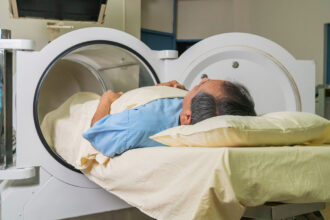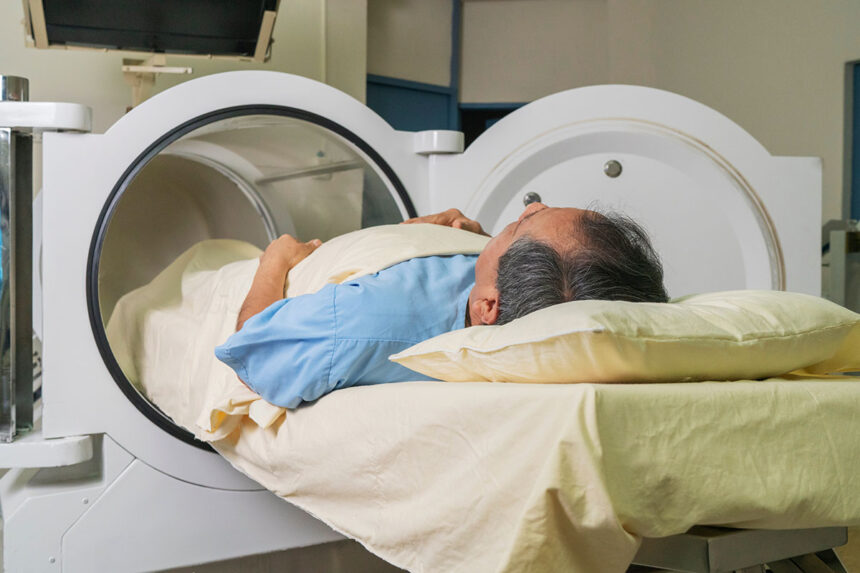In the age of rapid technological advancements and the pursuit of peak human performance, self-optimization has transformed from simple self-tracking to an intricate science of biohacking. What began as the Quantified Self Movement—focused on collecting and analyzing personal data—has now evolved into biohacking, where individuals actively manipulate their biology for enhanced performance, longevity, and overall well-being.
The future of self-improvement is about personalization—using data, biology, and technology to enhance human potential like never before.
Dave Asprey, Founder of Bulletproof and Biohacking Pioneer
This transition reflects a cultural shift from passive health monitoring to active intervention, where enthusiasts push the boundaries of biology, nutrition, and technology to optimize the human experience. In this blog, we’ll explore the historical development of self-optimization, the rise of biohacking, and the future trends shaping this movement.
The Quantified Self Movement: Laying the Foundation for Biohacking
Before biohacking became mainstream, the Quantified Self (QS) Movement emerged as a way for individuals to gain insights into their bodies using data.

What is the Quantified Self?
The QS movement was founded in 2007 by Kevin Kelly and Gary Wolf, editors of Wired Magazine. It encouraged people to track personal metrics—such as sleep patterns, heart rate, calorie intake, and exercise performance—to understand their health and behavior better.
Key Tools of Quantified Self:
- Wearable Devices – Fitbit, Apple Watch, and Oura Ring help track movement, heart rate, and sleep.
- Mobile Apps – MyFitnessPal, SleepCycle, and Cronometer allow users to log diet, workouts, and sleep quality.
- Blood Testing & DNA Kits – 23andMe and InsideTracker provide genetic insights and biomarkers for personalized health.
By gathering and analyzing personal health data, QS enthusiasts discovered patterns and behaviors that influenced their well-being. However, as technology progressed, people wanted to go beyond just tracking—they wanted to take action.
The Shift from Quantified Self to Biohacking
As the self-tracking movement grew, the desire to manipulate biological functions increased. This marked the transition from passive observation (QS) to active intervention (biohacking).

What is Biohacking?
Biohacking, also known as DIY biology, is the practice of optimizing human biology through technology, nutrition, and lifestyle interventions. Unlike QS, which focuses on data collection, biohacking applies scientific principles to modify physiological processes for improved performance and longevity.
The Pioneers of Biohacking
- Dave Asprey (Founder of Bulletproof) – Popularized nutritional biohacking, including Bulletproof Coffee and intermittent fasting.
- Ben Greenfield (Fitness Biohacker) – Focuses on exercise and recovery biohacks for athletic performance.
- Josiah Zayner (Genetic Biohacker) – Experiments with CRISPR gene-editing for self-experimentation.
These pioneers pushed biohacking into mainstream consciousness, influencing people to experiment with their biology to improve focus, energy, and longevity.
The Core Areas of Biohacking
Biohacking covers multiple disciplines, ranging from simple lifestyle modifications to cutting-edge genetic engineering. Here are the primary areas of biohacking:
What gets measured gets managed. Quantified self-tracking was just the beginning—biohacking is where true human enhancement begins.
Gary Wolf, Co-Founder of the Quantified Self Movement
1. Nutritional Biohacking
- Ketogenic & Fasting Diets – Switching to fat-based energy for cognitive clarity and metabolic efficiency.
- Nutrigenomics – Tailoring diet based on genetic predispositions to optimize nutrient absorption.
- Gut Microbiome Optimization – Consuming probiotics and fermented foods to enhance gut health and brain function.
2. Cognitive Enhancement & Neurohacking
- Nootropics (“Smart Drugs”) – Substances like Modafinil, L-Theanine, and Lion’s Mane mushroom for mental clarity.
- Brain Stimulation – Techniques like transcranial direct current stimulation (tDCS) to enhance cognitive function.
- Meditation & Breathwork – Using mindfulness and breathing techniques to improve focus and reduce stress.
3. Longevity & Anti-Aging Biohacking
- Cold Therapy & Heat Exposure – Ice baths and sauna sessions to activate longevity pathways.
- NAD+ Boosters & Senolytics – Supplements that promote cellular repair and slow aging.
- Stem Cell Therapy & Peptides – Emerging treatments aimed at tissue regeneration and lifespan extension.
4. Genetic Biohacking & DIY Biology
- CRISPR Gene Editing – Experimenting with genetic modifications for potential disease resistance.
- Gene Expression Manipulation – Using epigenetic interventions to optimize DNA activity.
- DIY Biology Labs – Community-based labs where biohackers conduct genetic and synthetic biology experiments.
5. Sleep & Recovery Optimization
- Blue Light Blocking – Glasses that reduce screen-induced melatonin suppression for better sleep.
- Wearable Sleep Trackers – Oura Rings and WHOOP bands monitor sleep cycles for optimization.
- Sleep Biohacks – Magnesium, Glycine, and melatonin timing for deeper sleep and recovery.
The Future of Biohacking: Where Are We Headed?
As technology and science continue to advance, biohacking is expected to become more precise, accessible, and personalized. Here are the future trends in self-optimization:

1. AI-Driven Biohacking
- AI-powered platforms will analyze real-time biometrics and provide personalized health interventions.
- Apps will offer AI-based fasting, diet, and supplement recommendations based on continuous health tracking.
2. Wearable Tech & Embedded Sensors
- Next-gen wearables will provide continuous blood glucose, hormone, and neurotransmitter monitoring.
- Biometric implants will offer real-time body optimization insights without external devices.
3. Personalized Genetic & Epigenetic Biohacking
- CRISPR technology may allow for personalized genetic enhancements.
- AI-driven epigenetic modifications could unlock tailored longevity interventions.
4. Psychedelic & Consciousness Biohacking
- Controlled microdosing of psychedelics like psilocybin and LSD for cognitive and emotional enhancement.
- Neurofeedback & VR-based meditation for optimized mental performance.
5. Human Augmentation & Cyborg Integration
- Brain-Computer Interfaces (BCIs) like Elon Musk’s Neuralink could enable direct communication between the brain and technology.
- Bionic limbs, enhanced vision, and sensory augmentation may redefine human capabilities.
Ethical Considerations & Challenges
As biohacking advances, ethical and legal concerns arise:
- Regulation & Safety – Many biohacking interventions lack long-term safety studies, raising regulatory questions.
- Wealth & Accessibility Gap – Cutting-edge biohacking tools may only be accessible to the wealthy, increasing health inequalities.
- Privacy Concerns – AI-driven health tracking could lead to data privacy risks and misuse.
- Genetic Modification Ethics – Editing human genes could lead to unforeseen consequences and ethical dilemmas.
Balancing innovation with responsibility will be crucial in ensuring biohacking remains a beneficial movement for society.
Conclusion: The Self-Optimization Revolution
The transition from Quantified Self to Biohacking marks a fundamental shift in how people approach health and performance. What started as simple data tracking has evolved into proactive biological intervention, where individuals optimize every aspect of their physiology.
With advancements in AI, genetics, and wearable tech, the future of self-optimization is limitless. However, ethical responsibility, scientific validation, and regulatory oversight will be essential to ensure these innovations lead to enhanced human potential rather than unintended consequences.
As biohacking continues to evolve, the question remains: How far should we push the limits of human enhancement?
Recent Insights on From Quantified Self to Biohacking: The Evolution of Self-Optimization
The self-optimization movement has evolved from passive tracking of personal health metrics to active biological intervention. What started as the Quantified Self (QS) Movement, focused on collecting data, has now transitioned into biohacking, where individuals modify their biology to enhance performance, longevity, and well-being. Recent studies highlight key trends in personalized health optimization, genetic self-experimentation, and AI-driven biohacking. Here are the latest insights:
“From Data Tracking to Biological Intervention”
A 2023 study in Nature Digital Medicine found that self-tracking technologies like wearables, glucose monitors, and biometric sensors have shifted from passive data collection to real-time biological feedback systems. This shift has encouraged users to go beyond tracking and actively modify their biology through interventions like fasting, cold exposure, and sleep optimization.
[Read the study here.]
“AI-Powered Self-Optimization”
A 2024 review in The Lancet Digital Health explored how AI-driven health coaching platforms are revolutionizing self-optimization. By analyzing real-time biometrics, AI systems now provide personalized recommendations for diet, exercise, and recovery, making biohacking more precise and accessible.
[Explore the review here.]
“N-of-1 Experimentation and Personalized Health”
A 2023 study in Cell Systems found that self-experimentation, known as “N-of-1 trials,” is becoming a core aspect of biohacking. Individuals use continuous glucose monitors, genetic testing, and hormone tracking to fine-tune their health interventions, shifting from generalized health advice to highly personalized protocols.
[Discover the study here.]
“Wearable Technology and Real-Time Biometric Feedback”
A 2024 study in PNAS confirmed that wearable biosensors, such as continuous glucose monitors (CGMs) and heart rate variability (HRV) trackers, are leading to better self-awareness and more effective biohacking interventions for metabolic and cognitive health.
[Read the study here.]
“Genetic Biohacking and Epigenetic Modulation”
A 2024 meta-analysis in Nature Genetics revealed that biohackers are increasingly using genetic data to personalize their nutrition, supplement intake, and fitness routines. Advances in epigenetics suggest that lifestyle changes can modulate gene expression, influencing aging and disease risk.
[Read the meta-analysis here.]
“Psychedelic Biohacking for Mental Optimization”
A 2023 trial in Frontiers in Neuroscience found that controlled microdosing of psychedelics like LSD and psilocybin can enhance creativity, cognitive flexibility, and emotional resilience, making it an emerging trend in biohacking communities.
[Explore the trial here.]
“Longevity and Anti-Aging Biohacking”
A 2024 paper in Aging Cell examined interventions like NAD+ boosters, caloric restriction, and hormesis-based stressors (cold therapy, heat exposure) and their potential to extend lifespan and improve metabolic health. These techniques are at the forefront of the longevity biohacking movement.
[Read the paper here.]
“Ethical and Regulatory Considerations in Biohacking”
A 2024 WHO panel discussion debated the ethical implications of DIY biohacking, including concerns over genetic modification, unregulated self-experimentation, and data privacy in AI-driven health tracking. Experts emphasized the need for responsible biohacking practices.
[Watch the panel discussion here.]
“The Future of Self-Optimization”
In a 2024 TED Talk, Dr. David Sinclair, a leading longevity researcher, discussed how AI-driven self-tracking, genetic biohacking, and neuroenhancement will define the next era of self-optimization, enabling individuals to proactively slow aging and enhance performance.
[Watch the TED Talk here.]
With advancements in AI, wearable tech, and genetic research, self-optimization is transitioning from passive health tracking to active biohacking interventions. However, scientific validation, ethical considerations, and responsible experimentation remain essential to ensuring safe and effective self-enhancement strategies.

























